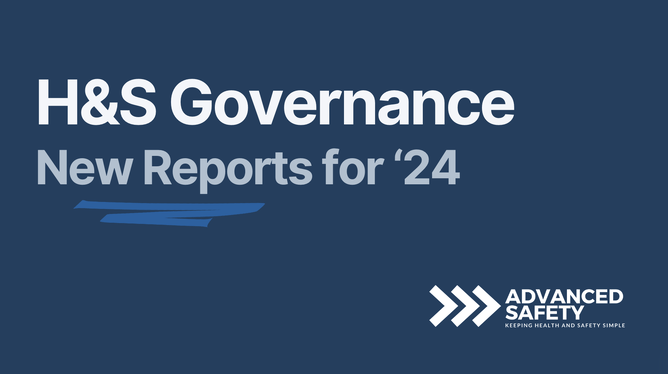Recent releases from the Institute of Directors ('Health and Safety Governance Guide') and Safe365 ('Safety Culture Maturity Report') provide invaluable insights for health and safety professionals and company directors. This article explores best practices and current landscape trends, drawing on data from over 10,000 Safe365 users and the expert opinions contained within the IoD release, to better understand our current starting point and help elevate safety cultures within organisations.
The Bedrock of Safety: Understanding Governance and Legal Obligations
The Health and Safety at Work Act 2015 mandates that directors must ensure compliance and effective risk management. According to the IoD guide, understanding these legal duties is crucial for embedding due diligence into the organisation’s core. The guide emphasises, “Directors must acquire knowledge of health and safety matters, understand the business operations and associated risks, ensure resources and processes are in place to manage risks, and verify compliance.”
However, Safe365’s report highlights a significant gap in this area, with director and management knowledge scoring an average of just Tier Three on their maturity scale. This indicates that senior leaders are not sufficiently equipped to lead from the top, impacting overall safety culture maturity.
Setting Expectations and Governance Processes
Clear roles and responsibilities are essential for effective safety governance. The IoD guide advises defining these roles at both executive and governance levels and establishing governance processes for setting health and safety policies and objectives. Regular governance meetings and structured reporting are critical components.
Safe365’s data reveals weaknesses in governance processes across many organisations. Director and management inductions score particularly low, averaging 42% and 51% respectively. This suggests that improving induction programmes is vital for setting the foundation for effective safety governance.
Risk Management and Assurance
Effective risk management is a cornerstone of safety culture. The IoD document highlights the importance of focusing on critical risks and ensuring key controls are effectively applied. Regular audits and external reviews are recommended to maintain these controls.
Safe365’s findings support this approach, showing that risk management expertise averages only 44% for both management and directors. This underscores the need for better training and a deeper understanding of risk management practices at the leadership level. Moreover, the report stresses the importance of discussing risk tolerance, noting that “low levels of maturity in risk tolerance conversations suggest our value sets around health and safety don’t fully address the company position between people and profitability.”
Internal and External Assurance and Verification
One of the significant shortfalls identified by Safe365 is the lack of internal and external assurance and verification of health and safety capabilities. Verification and audit activities scored just 38.7%, reflecting a tendency to focus more on responding to incidents rather than preventing them. This low score suggests that many organisations do not have robust mechanisms in place to ensure their safety systems are functioning as intended.
To address this, organisations should:
Implement Comprehensive Assurance Programmes: Combine internal audits, inspections, and external reviews to verify the effectiveness of health and safety systems.
Focus on Proactive Measures: Shift from reactive to proactive safety management by regularly stress testing safety controls and ensuring practice assurance.
Employee and Contractor Engagement
Engaging employees and contractors in safety discussions is crucial. The IoD guide states, “Engaging workers in health and safety discussions, seeking their input and feedback to understand the realities of their work, and ensuring policies are practical and effective are key to embedding a safety culture.”
However, Safe365’s data indicates significant gaps in contractor management and engagement, with many industries scoring low in these areas. For example, the average maturity score for contractor management systems is just 43%, highlighting the need for better management practices and engagement strategies.
Proactive Behaviours and Continuous Improvement
The IoD guide advocates for insightful reporting and constructive responses to issues, fostering a culture of continuous improvement. Safe365’s report reveals that many organisations struggle with proactive behaviours and effective monitoring. Elements like practice assurance and control effectiveness score below 40%, indicating that while systems may be in place, they are not always effectively implemented.
Safe365 emphasises the need for a proactive approach, stating, “Our lack of maturity in areas that measure proactive behaviour shows we are far from close to proactive safety cultures.” Implementing stress testing and practice assurance can ensure that emergency preparedness and safety controls are effective, transforming safety from a reactive task to an ingrained habit.
Where Do We Currently Stand?
The IoD guide offers a framework for directors to align their efforts and resources to, based on the Safe365 report it would suggest the vast majority of organisations, both large and small stubbornly remain at the foundational level.
Industry-Specific Insights
Safe365’s data provides a benchmark across industries, revealing varying levels of safety culture maturity. Mining and Hospitality lead in safety culture maturity, while sectors such as Arts & Recreation, IT & Media, and Public Services lag behind, barely achieving Tier Three status. This variation underscores the need for tailored strategies to address industry-specific challenges and leverage best practices.
Practical Steps for Improvement
Enhance Induction Programmes
Improve Risk Management Practices
Engage Employees and Contractors
Focus on Continuous Improvement
Leverage Industry Insights
Implement Internal and External Assurance and Verification Mechanisms
The Journey Ahead:
To shift the dial and move organisations from reactive safety to embedded safety culture requires a commitment to continuous learning, proactive behaviours, and employee engagement. By setting clear expectations, enhancing governance processes, and focusing on critical risk management, organisations can expect to elevate their safety cultures.
The IoD guide and Safe365 data report, offer unique insights toward achieving this goal. By implementing their recommendations and looking at what the data is currently telling us, directors and health and safety professionals can transform safety culture from a regulatory requirement to an intrinsic part of their organisational fabric.
Want to know where you currently stand?
If you would like to discuss the report's and how your business is currently performing, Advanced Safety can facilitate a Safe365 index workshop and produce an external recommendations roadmap customised to your organisations specific needs.

